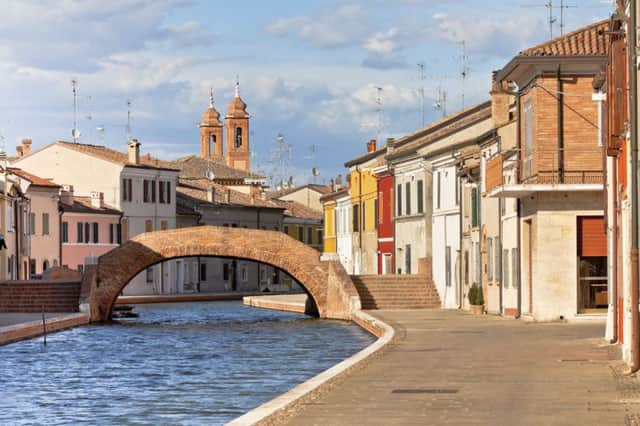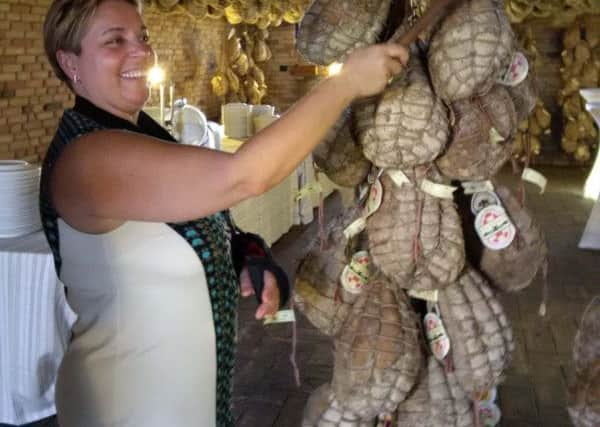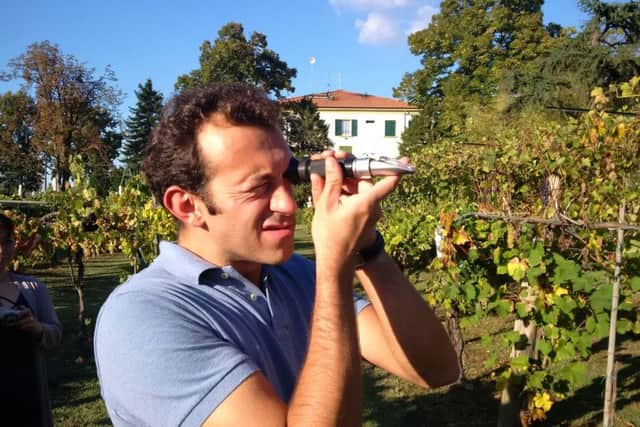Travel: A true taste of Italy at Emilia-Romagna
This article contains affiliate links. We may earn a small commission on items purchased through this article, but that does not affect our editorial judgement.


I n the climate-controlled, brick-walled basement of a family-run restaurant in the tiny town of Colorno, ten miles north of Parma, co-owner Edgarda Meldi is thumping a dangling hunk of drying pork with a hammer. She is demonstrating the rather unusual method by which pernickety inspectors will determine whether her produce, the dried meat known as Culatello di Zibello – one of the most prized delicacies in Italy – passes muster (it makes a specific sound when perfectly dry), and can go on to be sold across the country, and the world, to gourmets and the purely greedy alike.
The time period between a batch of fresh pigs’ hind legs arriving at the restaurant, and being shipped off to expectant customers, can be up to 36 months. In between occurs a process of curing and ageing that has been done by a similar method since the 14th century.
Advertisement
Hide AdWelcome to Emilia-Romagna, where, when it comes to good, quality food, they don’t do things by halves, and nothing is ever rushed. One of the wealthiest regions in the country, it spans over 8,500 square miles, extending from the Apennine mountains in the south to the river Po in the north. Thanks to its climate, it is one of the most fertile and productive areas of Italy. Its flat roads are also perfect for the famous local car manufacturers to test their luxury designs: Ferrari, Lamborghini, and Maserati were all born here (the Lamborghini company started life producing agricultural equipment and vehicles; but if your wallet can’t stomach the thought of one of these high-end marques, perhaps drooling over them in one of several museums in the area will do instead).


Emilia-Romagna’s capital is Bologna, home to the oldest university in the world, but I was planning to work my way eastwards from Piacenza through some of its other beautiful Renaissance cities, to find out exactly how it got its reputation for producing some of the best food in the world, which includes Parma ham, balsamic vinegar and stuffed fresh pasta (dried pasta comes from the south of Italy). First up, Piacenza, an attractive, small town with a population of around 100,000; its narrow, quiet cobbled streets, lined with buildings in shades of ochre, primrose yellow and salmon pink, lead to wide, shady squares, the most famous of which is Piazza dei Cavalli – so-called because of the two imposing bronze statutes of men on horseback in front of the Gothic town hall. They portray a couple of members of the region’s influential Farnese family, which spawned dukes and popes in medieval times, and left behind a legacy of elegant palazzi and churches.
It’s in a neighbouring square, Sant’Antonino, that I get my first real taste of the specialities of the region, at traditional restaurant Taverna In. Staff bring out plate after plate of unbearably delicious-looking fare; there’s a platter of cheese, including fat chunks of salty Parmesan and smoky Scamorza; a bowl of briny artichoke hearts; baked aubergines, smothered in rich, basil-spiked tomato sauce and topped with melted mozzarella; and a basket of something that looks like small golden pillows, which turn out to be gnocco fritto – parcels of dough fried until they’re chewy and light as air. These are to accompany the plate of affettati misti, better known as what Emilia-Romagna does best: cold, cured meats – including silky, pale pink prosciutto di Parma, dark red coppa (cured pork shoulder) and meltingly translucent strips of raw pancetta from the belly of the pig, made up of more fat than meat. And that was before we even got on to the pasta course – bowls of fresh, handmade egg pasta, all with different fillings. Each town and village has its own speciality, from chestnuts to mortadella; I tried crespelle, filled with spinach and ricotta, and gnocchi flavoured with pumpkin, washed down with the robust local red, Gutturnio.
An hour’s drive away, on the outskirts of Parma, is the suburb of Langhirano. Here I was going to see how the famous ham is produced, at the modest-sized, family run business, Piazza Peppino and co. There are around 150 Parma ham producers in the region, and only they have DOC (Denominazione di origine controllata, or “controlled designation of origin”) status, which guarantees that the ham is produced using particular methods, and to a particular standard.
Brothers Martino and Riccardo Piazza, and their cousin Francesco, are in their late twenties/early thirties, impossibly handsome, and passionate about pigs. Working in the business started by their grandfather in the 1970s, they produce between 30-35,000 haunches of dry-cured, aged ham per year, using nothing more than salt – and air. Martino explains that each phase of the process – from slaughtering (which is done elsewhere) to fat-trimming, refrigeration, salting, drying or rubbing with lard – is carried out within strict temperature, safety and hygiene controls, regulated by the official Parma Ham consortium (most DOC products have their own).


A good ham can be aged for between 17 and 33 months, and in order to be able to say theirs has obtained its DOC status, the Piazzas have to submit every single one to an inspection by the Parma Institute of Quality. Using a length of smooth, carved bone from a horse’s tibia (it carries the smell better), the inspector will insert it into a drying ham, to assess texture and scent. Only once they have been approved will the hams be branded with the coveted, five-tipped Ducal Crown you will spot on one hanging from the ceiling of any decent deli (they can sell, whole, for around €150/£111 each). Do they ever get fed up of eating ham? “No!” laughs Martino. “I eat it every day,” claims Francesco.
Advertisement
Hide AdAnd when they wheel out a hunk of 22-month-old prosciutto (Martino’s favourite), cutting it wafer thin on their industrial, red Berkel 21 slicer for me to taste, I can see why. Free of any additives, it’s delicate, smooth and ever so slightly sweet.
Parma itself is a noble, medium-sized city with a distinctive 13th-century, octagonal, pink-marbled Baptistry; the Baroque, wooden Teatro Farnese; and the imposing Palazzo della Pilotta, the former Farnese family home.
Advertisement
Hide AdMy final destination is Modena and on the outskirts I visit the elegant vineyards of Villa Bianca, an acetaia, or vinegar producing company. Dr Emilio Biancardi’s family has grown, picked, mashed and pressed the white trebbiano grapes for over a hundred years and he explains how the grapes need to have a high sugar content to turn from a pale, watery juice to a dark brown, syrupy liquid, a process that takes at least 12 years in wooden barrels. The very finest balsamic vinegar of Modena (if it’s not got “tradizionale” on the bottle – which is always bulbous, not rectangular – then sorry, it’s just a pale imitation) can be aged for 25 years and sells for around €89/£65. Cheaper than a brand new Ferrari Spider, it’s definitely a more accessible way to get an authentic taste of Italy.
• Flights from Edinburgh to Bologna cost from £66 each way with British Airways (www.britishairways.com); www.emiliaromagnaturismo.it/en